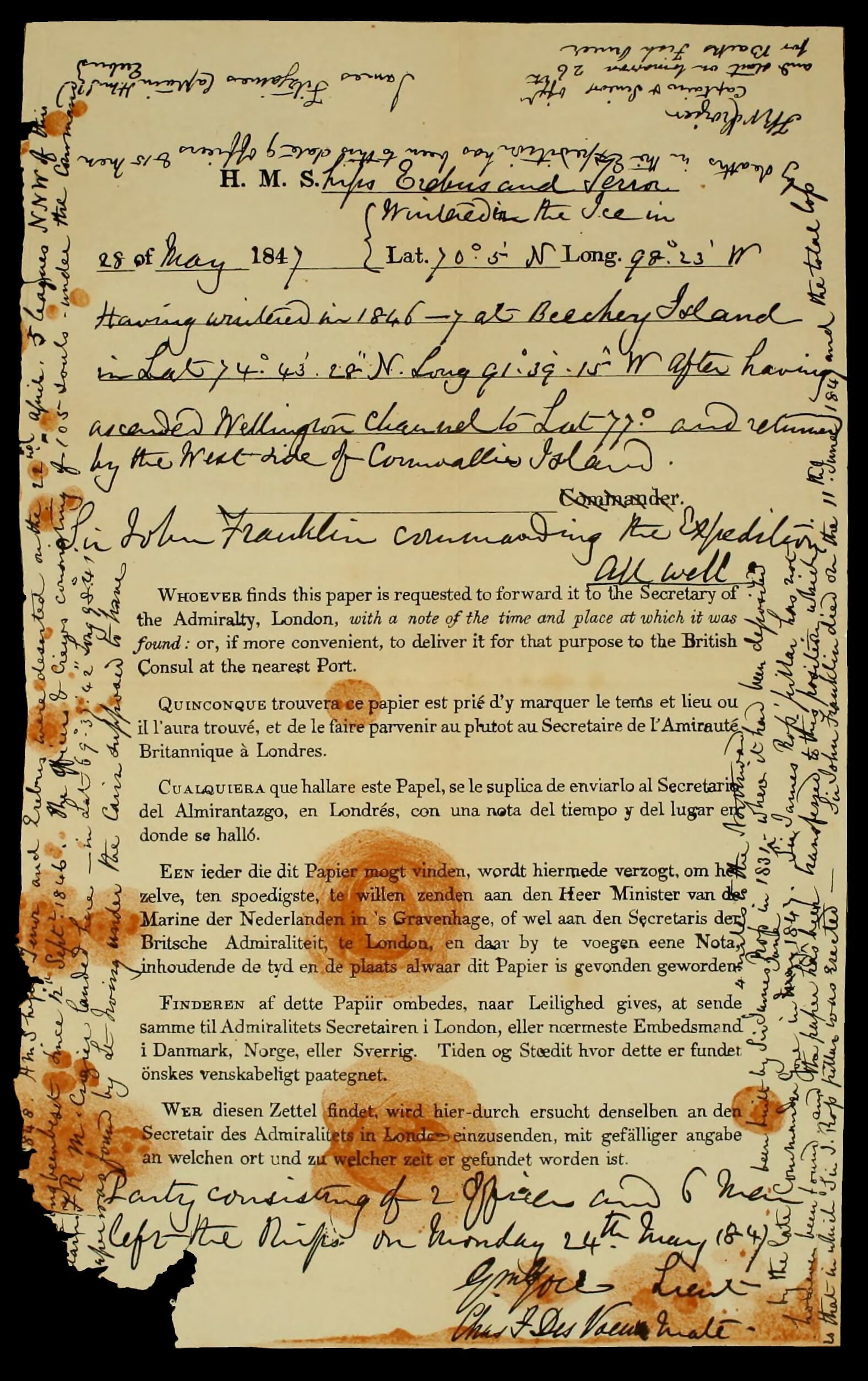This post includes spoilers for episode 3 of The Terror.
Sir John Franklin (Ciarán Hinds) met a gruesome end in The Terror‘s third episode, landing the most shocking death scene so far. Slaughtered by the mysterious monster stalking the crew, he leaves expedition without its leader.
Franklin’s death is gory yet oddly comical, given what happens next. Mourning their beloved captain, the crew arrange a full funeral for his very limited remains: a single leg, neatly wrapped in one white stocking. While it’s an obvious example of how The Terror adds supernatural spice to historical fact, the real story is arguably just as disturbing. We don’t actually know how Franklin died in real life, but he’s one of the few men for whom we have an actual date of death. That’s thanks to a document known as the Cairn Note, the last written report from the Franklin Expedition.
Review: Arctic horror series The Terror is one of the best new shows of 2018
The Cairn Note highlights just how isolated Franklin’s crew was from the rest of the world. Leaving in May 1845, the members sent their last letters home from Greenland in July. Then the two ships made their way north, spent the winter on Beechey Island in Canada, and froze into the ice in September 1846. By episode 3 we’re already two years into the expedition, which is where the Cairn Note comes in. It’s a kind of form letter that explorers would leave behind, like a message in a bottle to future travelers, saying, “We were here on this date, please forward this update to the British government.”

One of Franklin’s lieutenants left the letter in a cairn (a pile of rocks) on May 28, 1847, confirming “All well.” The scary part came a year later in April 1848, when the crew revisited the note to add more information. Written around the edges of the page, the update reveals that Franklin died just two weeks after the original letter, and disaster had struck the expedition since then. You should stop reading now if you’re worried about 150-year-old history spoilers because the letter then shares our final update on what the expedition did next.
In 1848, Captain Fitzjames and Captain Crozier wrote, “Sir John Franklin died on the 11th of June 1847 and the total loss by deaths in the Expedition has been to this date 9 officers and 15 men.” They were planning to abandon the ships and start marching south. After this moment, everything we know is gleaned from 19th-century Inuit interviews, later oral histories, and physical remnants from the crew’s journey.
Back home in England, the public was increasingly curious about what happened to Franklin’s party. The first rescue ship set out in 1848, followed by dozens of others throughout the 1840s and ’50s. The HMS Erebus and Terror became a kind of reverse Marie Celeste story, famous for vanishing without a trace. The wrecks weren’t located until 2014 and 2016, although the Cairn Note was found in 1859, becoming an enduring aspect of the Franklin Expedition mythos. After ignoring the testimony of Inuit people who saw Franklin’s crew on foot, the Admiralty finally had written evidence of what happened. And since the letter doesn’t specify how Franklin died, The Terror was free to decide he was torn apart by a bloodthirsty ice monster.


